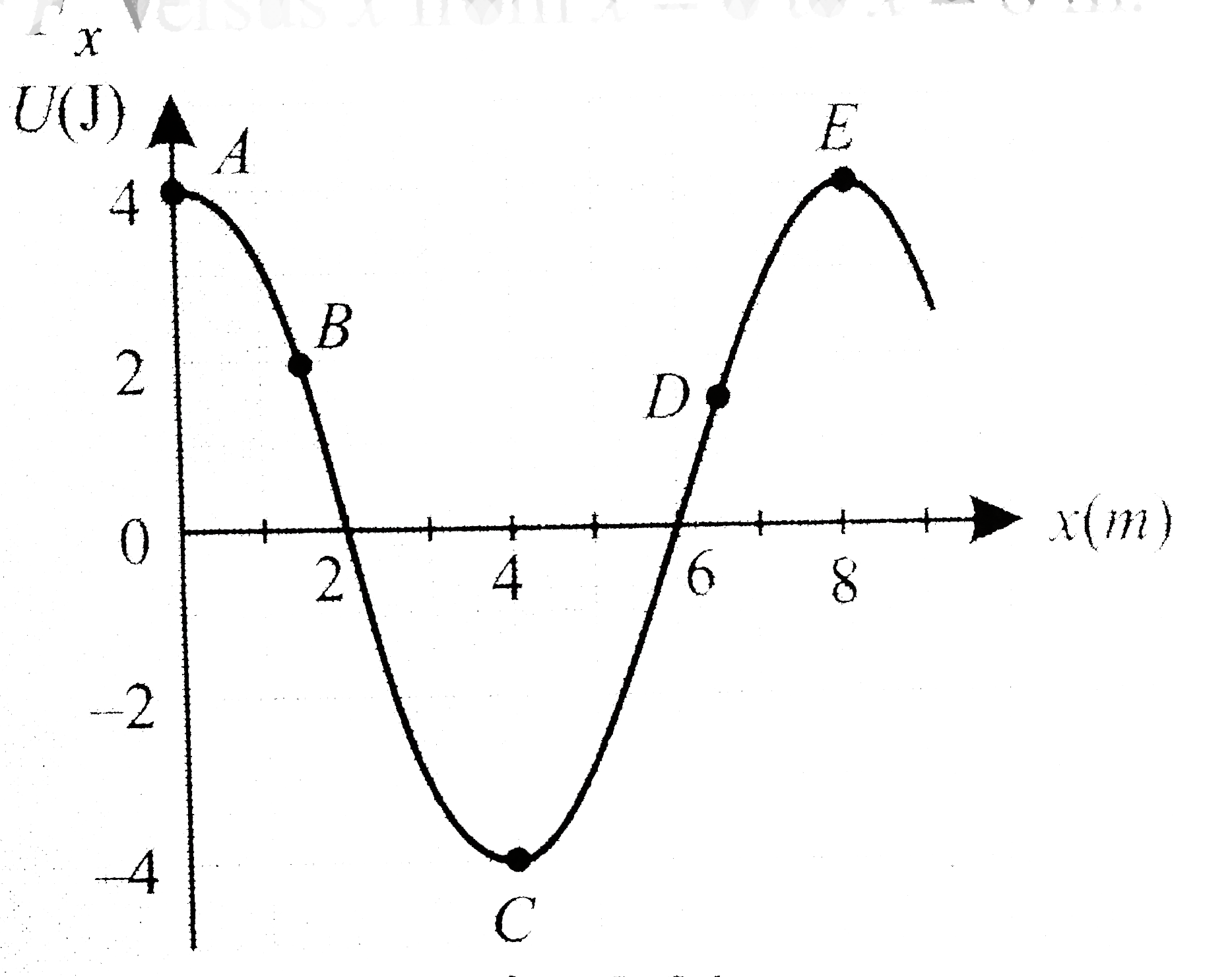Distinguish between stable, unstable and neutral equilibrium of a body
To distinguish between stable, unstable, and neutral equilibrium of a body, we can summarize the key characteristics of each type of equilibrium in a structured manner. Here’s a step-by-step breakdown:
Step 1: Define Equilibrium
Equilibrium refers to a state where a body is at rest or moving with constant velocity. In this state, the net force and net torque acting on the body are zero.
Step 2: Identify Types of Equilibrium
There are three types of equilibrium:
1. Stable Equilibrium
2. Unstable Equilibrium
3. Neutral Equilibrium
Step 3: Characteristics of Each Type
1. Stable Equilibrium
- Potential Energy: The potential energy of the system is at a minimum at this point.
- Displacement Behavior: If the body is slightly displaced from this position, it will return to its original equilibrium position.
- Second Derivative of Potential Energy: The second derivative of potential energy with respect to displacement is positive (d2Udr2>0).
2. Unstable Equilibrium
- Potential Energy: The potential energy of the system is at a maximum at this point.
- Displacement Behavior: If the body is slightly displaced from this position, it will move further away from the equilibrium position.
- Second Derivative of Potential Energy: The second derivative of potential energy with respect to displacement is negative (d2Udr2<0).
3. Neutral Equilibrium
- Potential Energy: The potential energy of the system remains constant regardless of the displacement.
- Displacement Behavior: If the body is slightly displaced from this position, it will remain in its new position without returning to the original equilibrium.
- Second Derivative of Potential Energy: The second derivative of potential energy with respect to displacement is zero (d2Udr2=0).
Step 4: Summary Table
| Type of Equilibrium | Potential Energy | Displacement Behavior | Second Derivative of Potential Energy |
|---------------------|------------------|-----------------------|---------------------------------------|
| Stable | Minimum | Returns to equilibrium | >0 |
| Unstable | Maximum | Moves away from equilibrium | <0 |
| Neutral | Constant | Remains in displaced position | =0 |
Step 5: Examples
- Stable Equilibrium: A ball resting at the bottom of a bowl.
- Unstable Equilibrium: A ball resting on the top of a hill.
- Neutral Equilibrium: A ball resting on a flat surface.
Equilibrium refers to a state where a body is at rest or moving with constant velocity. In this state, the net force and net torque acting on the body are zero.
There are three types of equilibrium:
1. Stable Equilibrium
2. Unstable Equilibrium
3. Neutral Equilibrium
1. Stable Equilibrium
- Potential Energy: The potential energy of the system is at a minimum at this point.
- Displacement Behavior: If the body is slightly displaced from this position, it will return to its original equilibrium position.
- Second Derivative of Potential Energy: The second derivative of potential energy with respect to displacement is positive (d2Udr2>0).
2. Unstable Equilibrium
- Potential Energy: The potential energy of the system is at a maximum at this point.
- Displacement Behavior: If the body is slightly displaced from this position, it will move further away from the equilibrium position.
- Second Derivative of Potential Energy: The second derivative of potential energy with respect to displacement is negative (d2Udr2<0).
- Potential Energy: The potential energy of the system remains constant regardless of the displacement.
- Displacement Behavior: If the body is slightly displaced from this position, it will remain in its new position without returning to the original equilibrium.
- Second Derivative of Potential Energy: The second derivative of potential energy with respect to displacement is zero (d2Udr2=0).
| Type of Equilibrium | Potential Energy | Displacement Behavior | Second Derivative of Potential Energy |
|---------------------|------------------|-----------------------|---------------------------------------|
| Stable | Minimum | Returns to equilibrium | >0 |
| Unstable | Maximum | Moves away from equilibrium | <0 |
| Neutral | Constant | Remains in displaced position | =0 |
- Stable Equilibrium: A ball resting at the bottom of a bowl.
- Unstable Equilibrium: A ball resting on the top of a hill.
- Neutral Equilibrium: A ball resting on a flat surface.
Topper's Solved these Questions
- SYSTEMS OF PARTICLES AND ROTATIONAL MOTIONBOOK - MODERN PUBLICATIONCHAPTER - SYSTEMS OF PARTICLES AND ROTATIONAL MOTIONEXERCISE - REVISION EXERCISES (Long Answer Questions Carrying 5 marks)
8 Videos
- SYSTEMS OF PARTICLES AND ROTATIONAL MOTIONBOOK - MODERN PUBLICATIONCHAPTER - SYSTEMS OF PARTICLES AND ROTATIONAL MOTIONEXERCISE - REVISION EXERCISES (Numerical Problems)
20 Videos
- SYSTEMS OF PARTICLES AND ROTATIONAL MOTIONBOOK - MODERN PUBLICATIONCHAPTER - SYSTEMS OF PARTICLES AND ROTATIONAL MOTIONEXERCISE - REVISION EXERCISES (Fill in the Blanks Carrying 1 mark )
9 Videos
- PHYSICAL WORLD BOOK - MODERN PUBLICATIONCHAPTER - PHYSICAL WORLD EXERCISE - Revision exercises (Long answer questions)
6 Videos
- THERMAL PROPERTIES OF MATTERBOOK - MODERN PUBLICATIONCHAPTER - THERMAL PROPERTIES OF MATTEREXERCISE - CHAPTER PRACTICE TEST
15 Videos
Similar Questions
Distinguish between stable, unstable and neutral equilibria of a body.
View SolutionFor the potential energy curve shown shown in figure.

(a) Find directions of force at points A,B,C,D and E.
(b) Find positions of stable, unstable and neutral equilibriums.
View SolutionFor the potential energy curve shown in figure.
(a) Determine whether the force Fx is positive, negative, or zero at the five points indicated, (b) Indicate points of stable, unstable, and neutral equilibrium, (c) Sketch the curve for Fx versus x from x=0 to x=8m.

View SolutionWhen is a body said to be in neutral equilibrium ?
View SolutionHow would you distinguish between
(a) Stable and unstable nucleus.
(b) Nuclear and chemical reaction.
(c) α−andβ−particles.
View SolutionHow do you distinguish between dorsal and ventral surface of the body of earthworm ?
View SolutionDistinguish between luminous and non-luminous bodies.
View SolutionHow can you distinguish between equilibrium position and equilibrium constant ? Give an example.
View SolutionDistinguish between full employment equilibrium and underemployment equilibrium.
View SolutionFinding Potential Energy from Force | Finding Force from Potential Energy | Equilibrium (Stable, unstable and neutral) | Power due to a force
View Solution